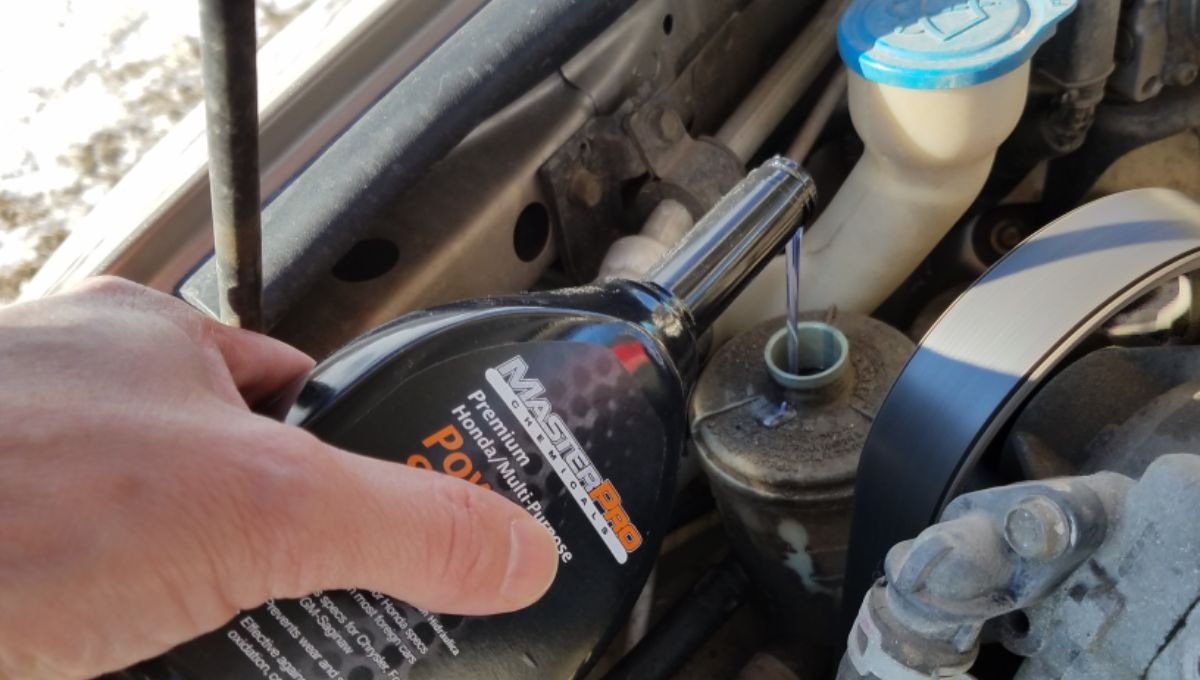Can Cold Weather Impact Your Steering? Find Out!
Yes, cold weather can cause power steering problems by thickening the power steering fluid, making it harder for the system to function properly. As temperatures drop, the power steering fluid can become more viscous, leading to difficulty in steering and potential damage to the power steering pump and other components.
This can result in increased steering effort, noise when turning the steering wheel, and potential leaks in the power steering system. It’s important to monitor the power steering fluid levels and condition during colder months to prevent or address any issues that may arise due to the weather.
Understanding the impact of cold weather on power steering can help in maintaining the vehicle’s steering system and ensuring safe driving during winter.
Do Electric Power Steering Systems Have Problems in Cold Weather?
Yes, electric power steering (EPS) systems can experience problems in cold weather, although they are generally more reliable than hydraulic systems in such conditions.
Here are some common issues:
- Battery Performance: Cold weather can affect the performance of your car’s battery. Since EPS relies on the electrical system, a weak battery can lead to reduced power steering performance or temporary loss of assist.
- Electrical Components: Cold temperatures can cause electrical components and connections to contract, potentially leading to poor connections or faults in the EPS system.
- Stiff Steering: In very cold conditions, you might experience stiffer steering initially as the system adjusts to the temperature, although this should improve as the vehicle warms up.
- Error Messages: Your vehicle’s dashboard might display error messages or warning lights related to the EPS system if there are any issues with the sensors or electronics caused by the cold.
To mitigate these issues, ensure your battery is in good condition and fully charged, and allow your vehicle to warm up before driving. Regular maintenance and checks of the EPS system can also help prevent problems in cold weather. If you continue to experience issues, it’s advisable to have your vehicle inspected by a professional mechanic.
The Chill Factor: Steering Sensitivity In Cold Climates

The Chill Factor: Steering Sensitivity in Cold Climates
In cold weather, power steering systems can experience issues due to the impact of low temperatures on the steering sensitivity.
Temperature Influence On Power Steering
Temperature fluctuations affect power steering systems, especially in cold climates.
Fluid Dynamics At Low Temperatures
Fluid dynamics change in power steering systems when exposed to low temperatures.
Hydraulic Systems Under Pressure
In cold weather, hydraulic systems can experience power steering problems due to increased pressure on components. The drop in temperatures can cause fluid viscosity changes, leading to potential issues with steering responsiveness and performance. Regular maintenance and using the right fluids can help prevent these problems.
When temperatures start to drop, there is a possibility that your power steering system may face some issues. The hydraulic systems under pressure, especially the power steering system, can be affected by cold weather. One of the reasons for this is the change in viscosity of the steering fluid. Let’s take a closer look at the potential problems that cold weather can cause for hydraulic systems under pressure.
Viscosity Changes In Steering Fluid
The steering fluid in your vehicle is designed to be a specific viscosity to ensure that it can flow through the power steering system smoothly. However, when the temperature drops, the viscosity of the fluid can change, making it thicker and more difficult to flow through the system. This can result in increased strain on the power steering pump, which can cause it to fail over time. In severe cases, the steering fluid can even freeze, preventing the power steering system from working altogether.
Cold Start: Strain On The Steering Pump
When starting your car in cold weather, the power steering pump has to work harder to generate pressure and circulate the fluid. This can put additional strain on the pump and cause it to wear out faster than it would in normal conditions. In addition, the belts and pulleys that drive the pump can also be affected by cold weather, which can cause them to crack or break.
To prevent power steering problems caused by cold weather, it is important to ensure that your vehicle is properly maintained. This includes regularly checking the level and condition of the steering fluid, as well as ensuring that the power steering pump and associated components are in good working order. Additionally, warming up your vehicle for a few minutes before driving can help to reduce the strain on the power steering system during cold starts.
Electric Power Steering: Does Temperature Matter?
Electric Power Steering: Does Temperature Matter?
Battery Performance In The Cold
Extreme cold weather affects the performance of the power steering system, particularly the battery. In cold temperatures, battery capacity decreases, resulting in reduced power to the electric power steering system.
Sensor Sensitivity And Response Times
The sensors in the electric power steering system are sensitive to temperature changes. Cold weather can affect their response times, causing delayed or erratic steering behavior.
Mechanical Components: Cold-induced Contractions
When the temperature drops, the cold weather can have an impact on the mechanical components of your vehicle, including the power steering system. One of the main issues that can arise is cold-induced contractions, which can affect both metal and rubber parts. Understanding how these components react to the cold can help you identify and address power steering problems that may occur in cold weather.
Metal And Rubber Parts React To Cold
In cold temperatures, metal and rubber parts in the power steering system can contract, causing potential issues. Metal parts, such as the steering column and pump housing, can shrink slightly, which may result in increased friction and resistance in the system. Rubber seals and hoses can also harden and become less pliable, leading to leaks or reduced flexibility.
Steering Rack And Pinion Behavior
The steering rack and pinion, which are critical components of the power steering system, can also be affected by cold-induced contractions. The steering rack, responsible for translating the rotational motion of the steering wheel into linear motion, may experience increased friction due to the contraction of its metal parts. This can make steering feel stiffer and less responsive. The pinion, which connects the steering rack to the steering column, can also be affected by the contraction of its metal components, resulting in potential alignment issues.
To mitigate these potential problems, it is important to ensure that your power steering system is properly maintained and inspected regularly. This includes checking the level and condition of power steering fluid, inspecting hoses and seals for any signs of wear or damage, and addressing any leaks or abnormal noises promptly. Additionally, using a power steering fluid that is formulated for cold weather conditions can help minimize the effects of cold-induced contractions.
By understanding how the mechanical components of your power steering system react to cold weather, you can take proactive steps to prevent and address power steering problems. Regular maintenance and attention to potential issues can help ensure that your power steering system operates smoothly, even in chilly temperatures.
Winter Driving Tips For Steering Control
Cold weather can indeed lead to power steering issues, affecting steering control. To combat this, check fluid levels regularly and warm up your vehicle before driving in winter conditions. Additionally, keep an eye on any unusual noises or stiffness in the steering wheel to prevent potential problems.
Winter Driving Tips for Steering Control
Pre-drive Warm-Up Strategies
Before heading out in cold weather, it’s important to take some pre-drive warm-up strategies to ensure your power steering system functions properly. Cold temperatures can affect the viscosity of power steering fluid, making it thicker and less effective in providing smooth steering control.
To prevent power steering problems, follow these tips:
1. Start your vehicle and let it idle for a few minutes to warm up the engine and power steering system.
2. Gently turn the steering wheel left and right a few times to circulate the warm fluid throughout the system.
3. Check the power steering fluid level and top it up if necessary. Refer to your vehicle’s manual for the correct type of power steering fluid.
Handling Steering in Icy Conditions
Navigating icy road conditions can be challenging, especially when it comes to maintaining steering control. To stay safe on the road, keep the following tips in mind:
1. Slow down: Reduce your speed to allow for better control of your vehicle. This will give you more time to react to any unexpected situations.
2. Maintain a safe distance: Increase your following distance to allow for longer stopping distances in case of sudden stops or skidding.
3. Avoid sudden movements: Make smooth and gradual steering adjustments to prevent skidding and loss of control.
4. Be aware of black ice: Black ice is a thin, transparent layer of ice that forms on the road surface and can be difficult to detect. Stay vigilant and be cautious when driving over bridges, shaded areas, and areas prone to freezing.
5. Use gentle braking: Apply the brakes gently and smoothly to avoid locking up the wheels and causing a loss of control.
6. Use your vehicle’s traction control system: If your vehicle is equipped with traction control, make sure it is enabled. This system helps prevent wheel slippage and aids in maintaining steering control.
Remember, in icy conditions, it’s essential to drive with caution and adapt your steering techniques accordingly. By following these winter driving tips, you can minimize the risk of power steering problems and ensure a safer journey in cold weather.
Stay safe and enjoy the winter wonderland!
Maintenance Musts For Reliable Winter Steering
In cold weather, power steering problems can be a real headache. To ensure reliable winter steering, it’s crucial to prioritize maintenance. By staying on top of regular fluid checks and changes, as well as inspecting steering system components, you can avoid potential issues and keep your vehicle running smoothly during the colder months.
Regular Fluid Checks And Changes
Fluid levels are vital for proper power steering function. Low levels can lead to increased friction and wear on the system, particularly in cold temperatures. Regularly check and maintain power steering fluid levels to prevent potential problems.
Inspecting Steering System Components
Regular inspections of steering system components are essential for identifying wear and tear. Pay close attention to hoses, belts, and the steering rack. Any signs of damage or wear should be addressed promptly to prevent potential power steering issues during winter.
Common Cold-weather Steering Complaints
Cold weather can lead to common power steering complaints such as stiff or unresponsive steering, whining or squealing noises, and leaks. The drop in temperature can cause the power steering fluid to thicken, putting extra strain on the system and leading to potential issues.
Regular maintenance and using the recommended fluid can help prevent these problems.
Stiff Steering Wheel
Drivers often encounter stiff steering wheels in cold weather.
This issue can make turning difficult and uncomfortable for the driver.
Noises And Whines When Turning
Another common complaint is noises and whines while turning the wheel.
These sounds may indicate low power steering fluid or worn-out components.
Professional Insight: Mechanics On Cold Weather And Steering
In cold weather, power steering problems can arise due to changes in fluid viscosity. Cold temperatures can cause the power steering fluid to thicken, making it harder for the system to function properly. This can result in stiff steering and difficulty turning the wheel.
It is important to ensure that the power steering fluid is at the proper level and viscosity to avoid potential issues during cold weather conditions.
Expert Opinions On Steering Care
Professional mechanics stress regular maintenance in cold weather.
They advise checking fluid levels for optimal performance.
Technician Advice For Winterizing Your Car
Mechanics suggest using recommended fluids for power steering.
They also recommend inspecting hoses for any signs of wear.
Regular maintenance can prevent steering issues in winter.
In cold weather, power steering problems may arise.
Mechanics emphasize preventive care during winter months.
Conclusion
To conclude, it is evident that cold weather can indeed cause power steering problems. The drop in temperature can thicken the power steering fluid, making it harder for the system to function properly. This can result in difficulty turning the steering wheel or even complete failure of the power steering system.
Regular maintenance and checking fluid levels can prevent these issues from occurring. It is important to address any power steering problems immediately to avoid further damage and ensure safe driving in all weather conditions.

Specializes on car underchassis & power steering repair. We have experienced mechanic to attend all your underchassis & power steering repair needs.


